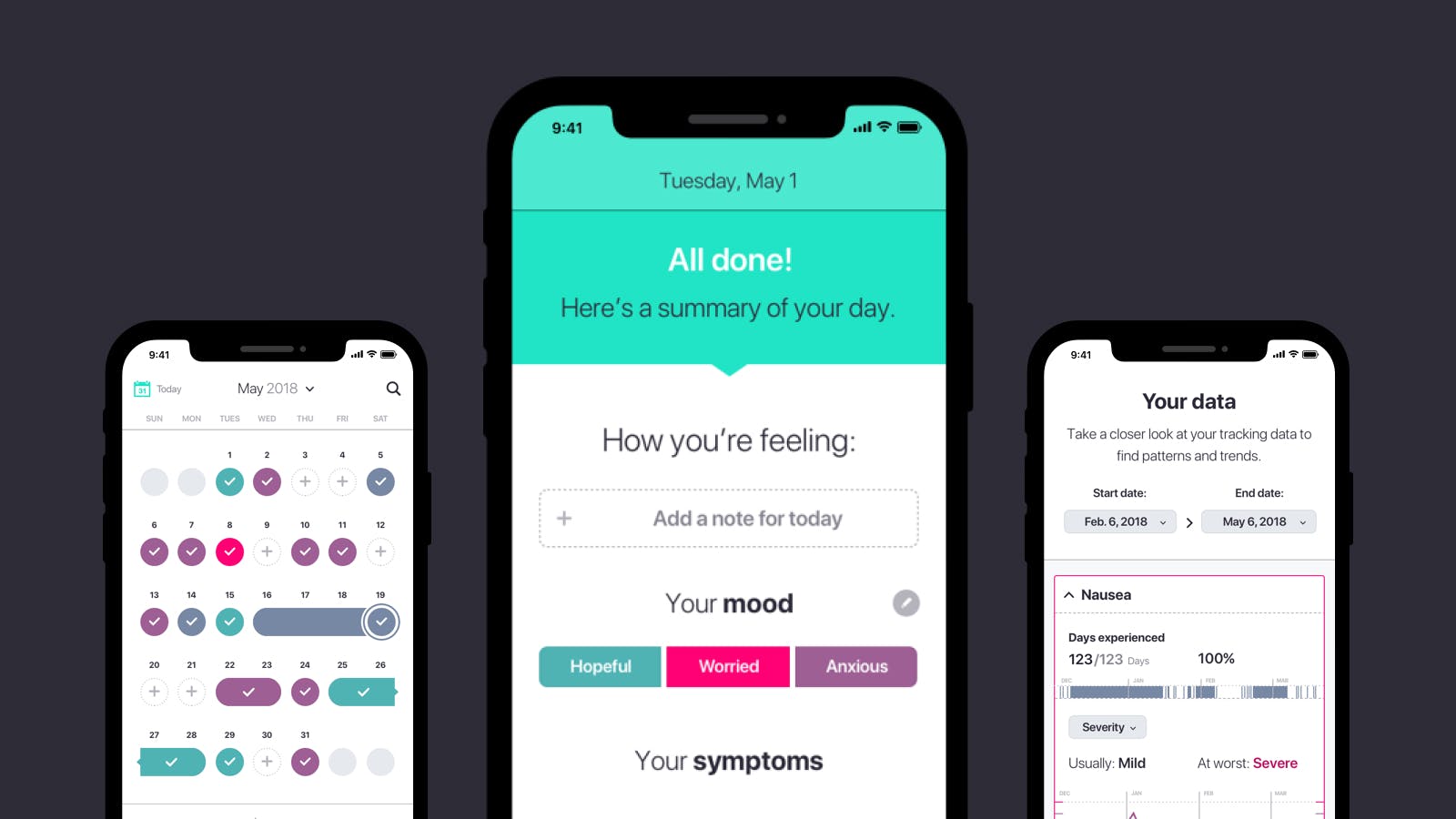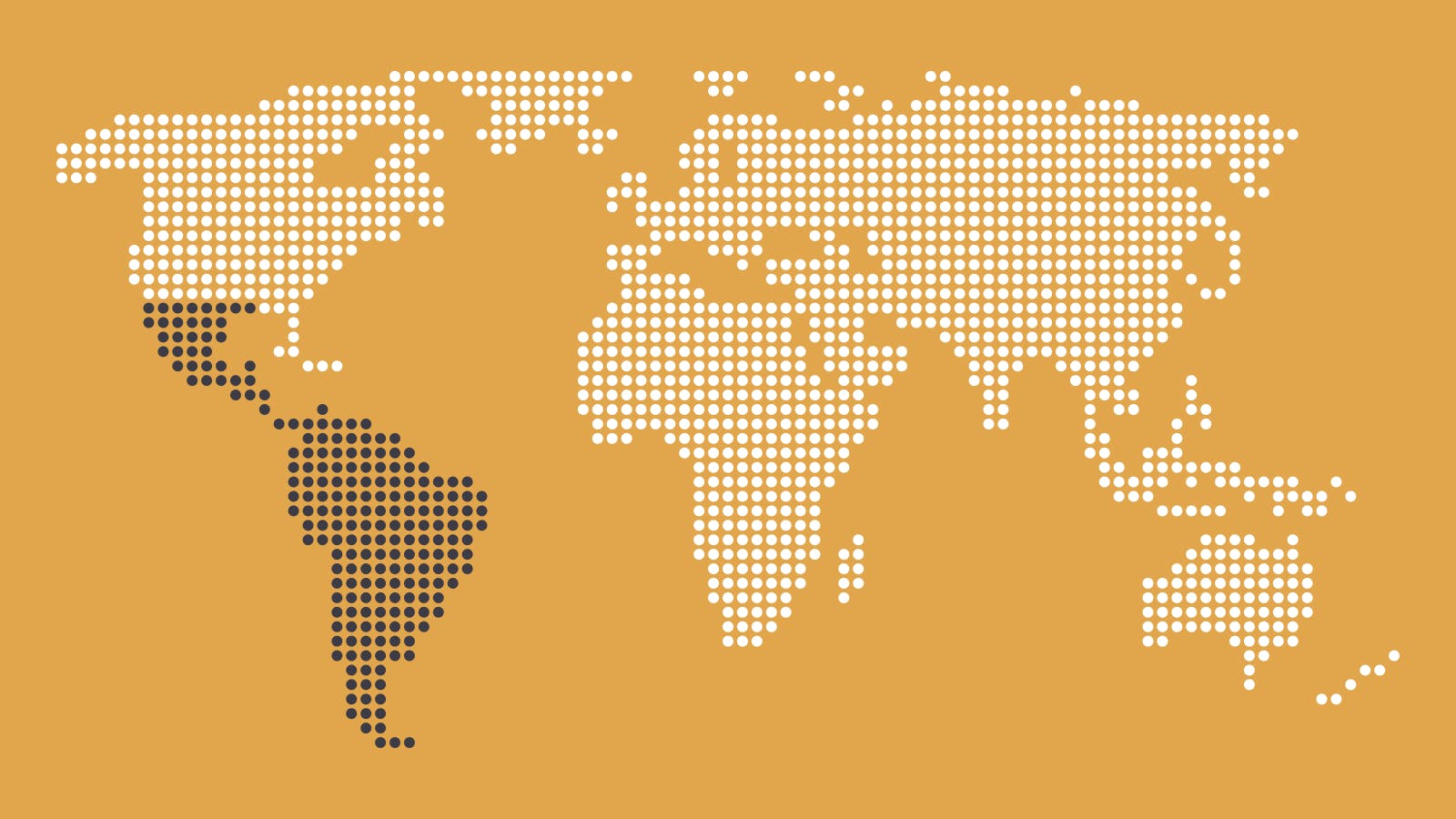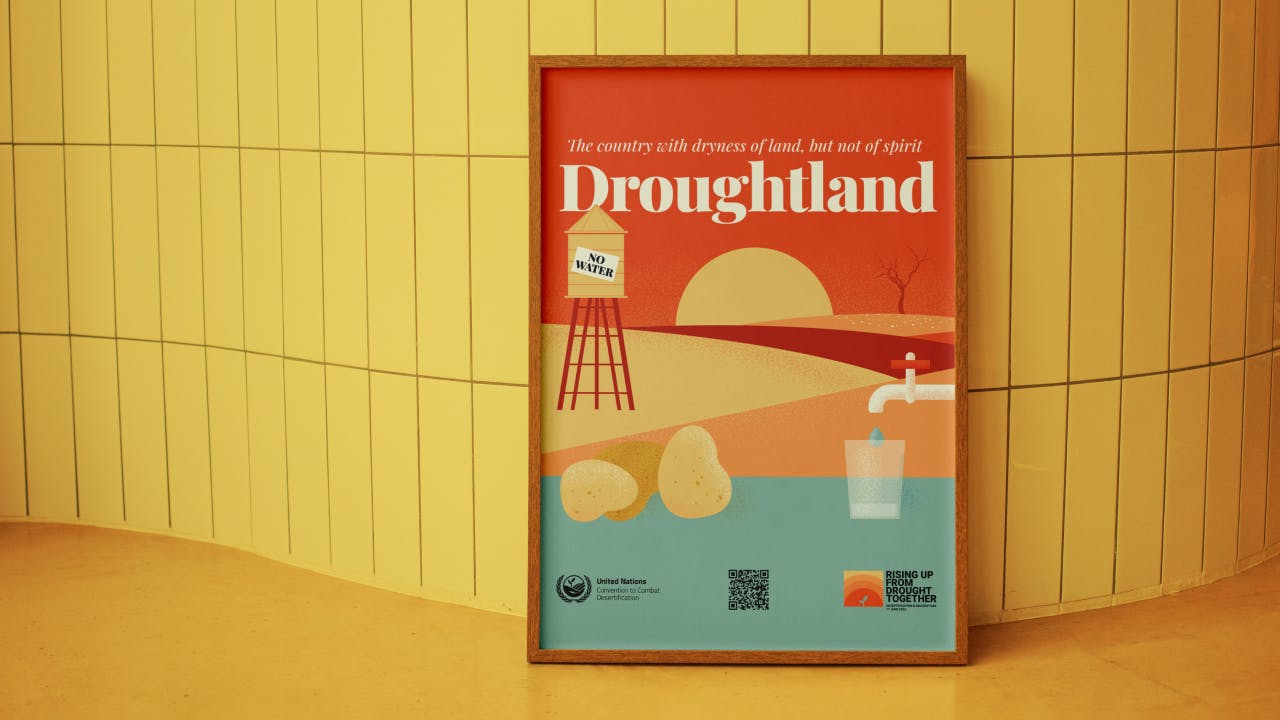What if care teams had access to data that could help them improve their cancer patient’s treatments?
Background
Objectives
Design a solution
Reduce the amount of time
Alert medical teams
Provide data
Improve outcomes
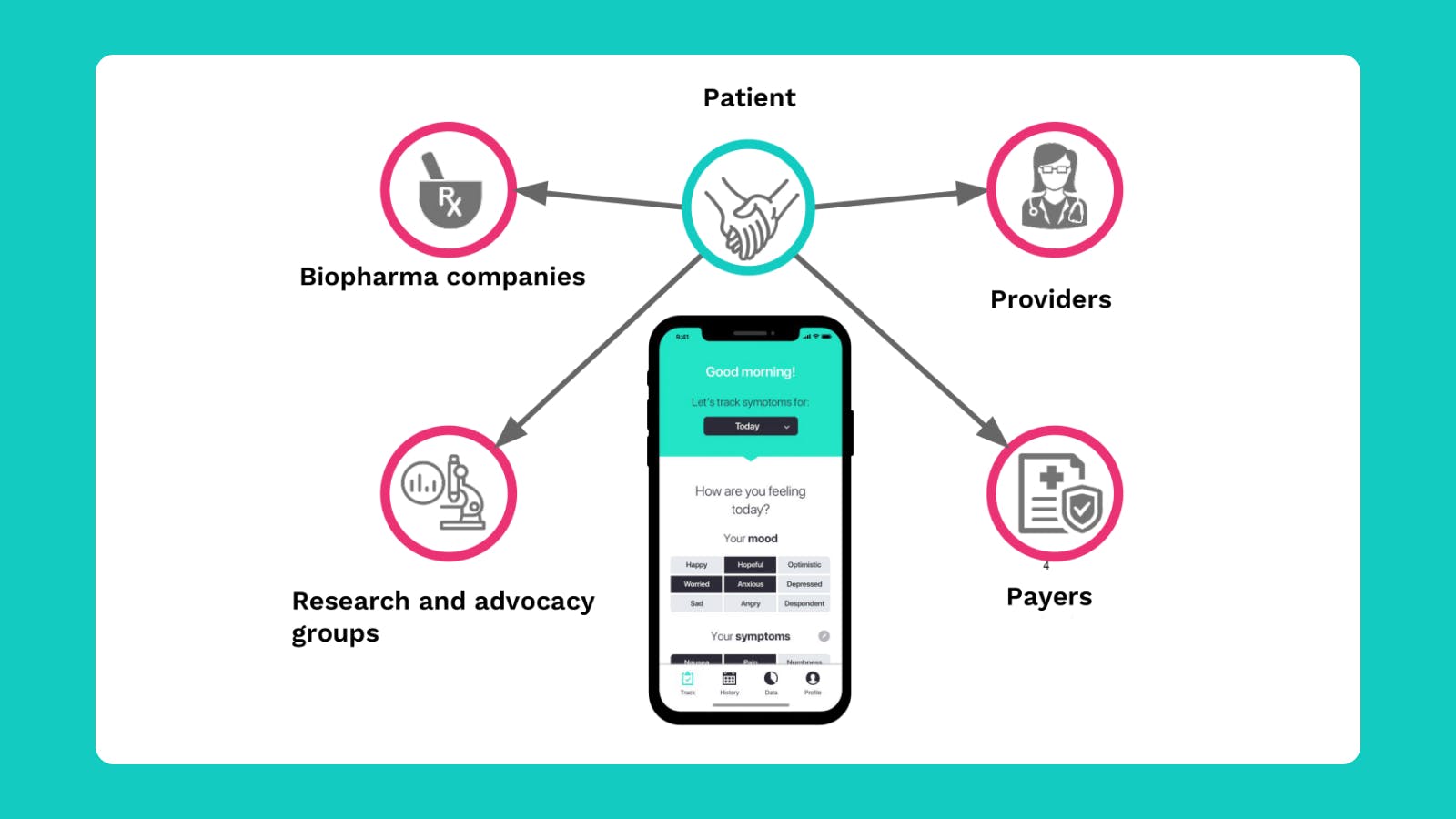
How did we work through the challenge?
User research
We took time from our client work to learn about the patient and medical team experience in both Argentina and in the US, developing workshops, design sessions, spending time with patients, medical professionals, caregivers and others to design an application that not only was easy to use, but learned from the user and could identify adverse trends before they became a more serious issue.
Prototype
Along with input from hospitals and cancer centers, we developed the first prototype of Tela, a free mobile and web application that easily tracked patient-generated health data through validated physical and psychosocial measures and integrated it into clinical care and research. We tested the prototype with a cancer patient and her oncology team, and saw great improvements in her cancer treatment, such as appointments with doctors that were 20 minutes shorter than before, as well as 0 emergency visits to the hospital.
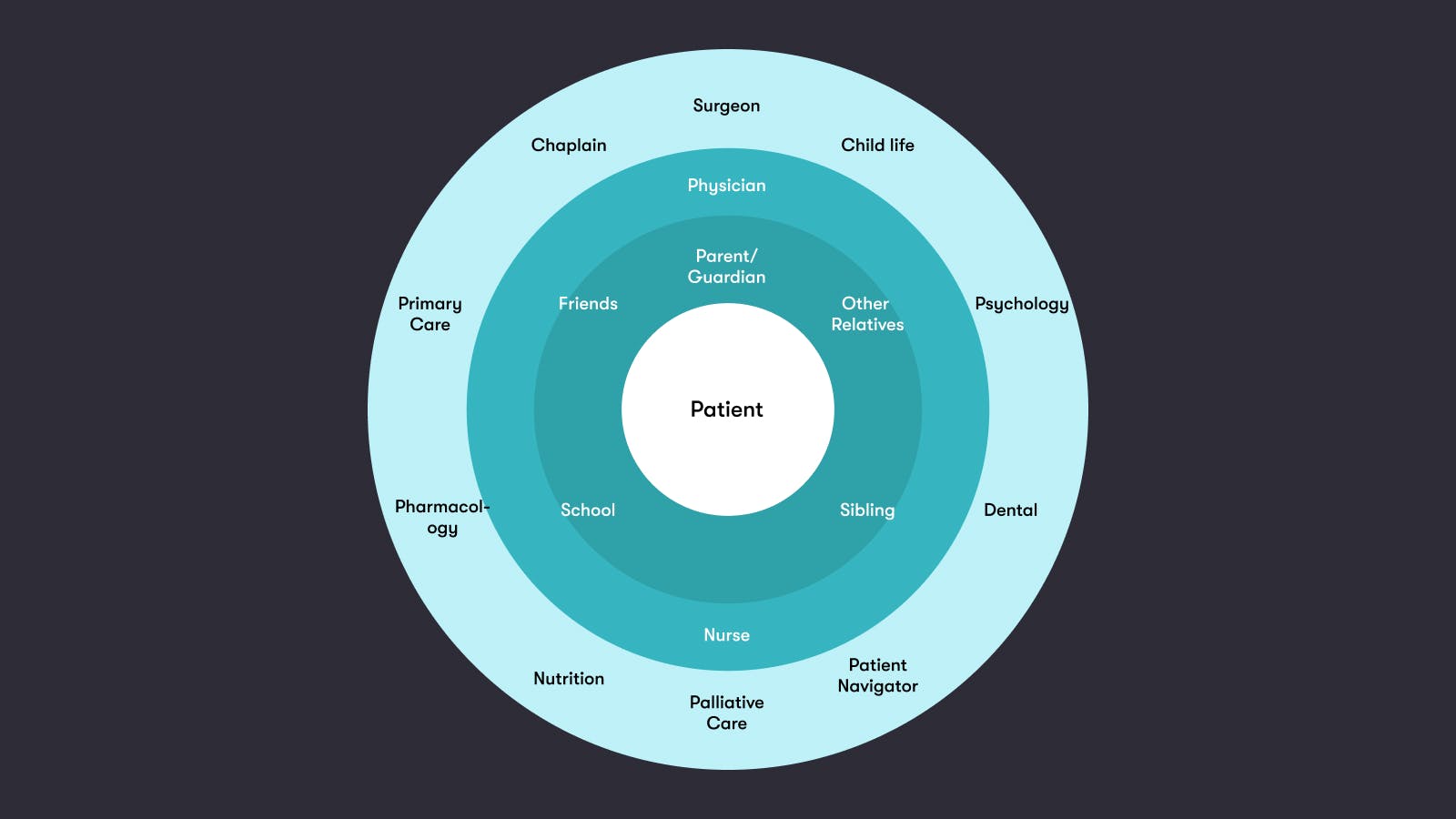
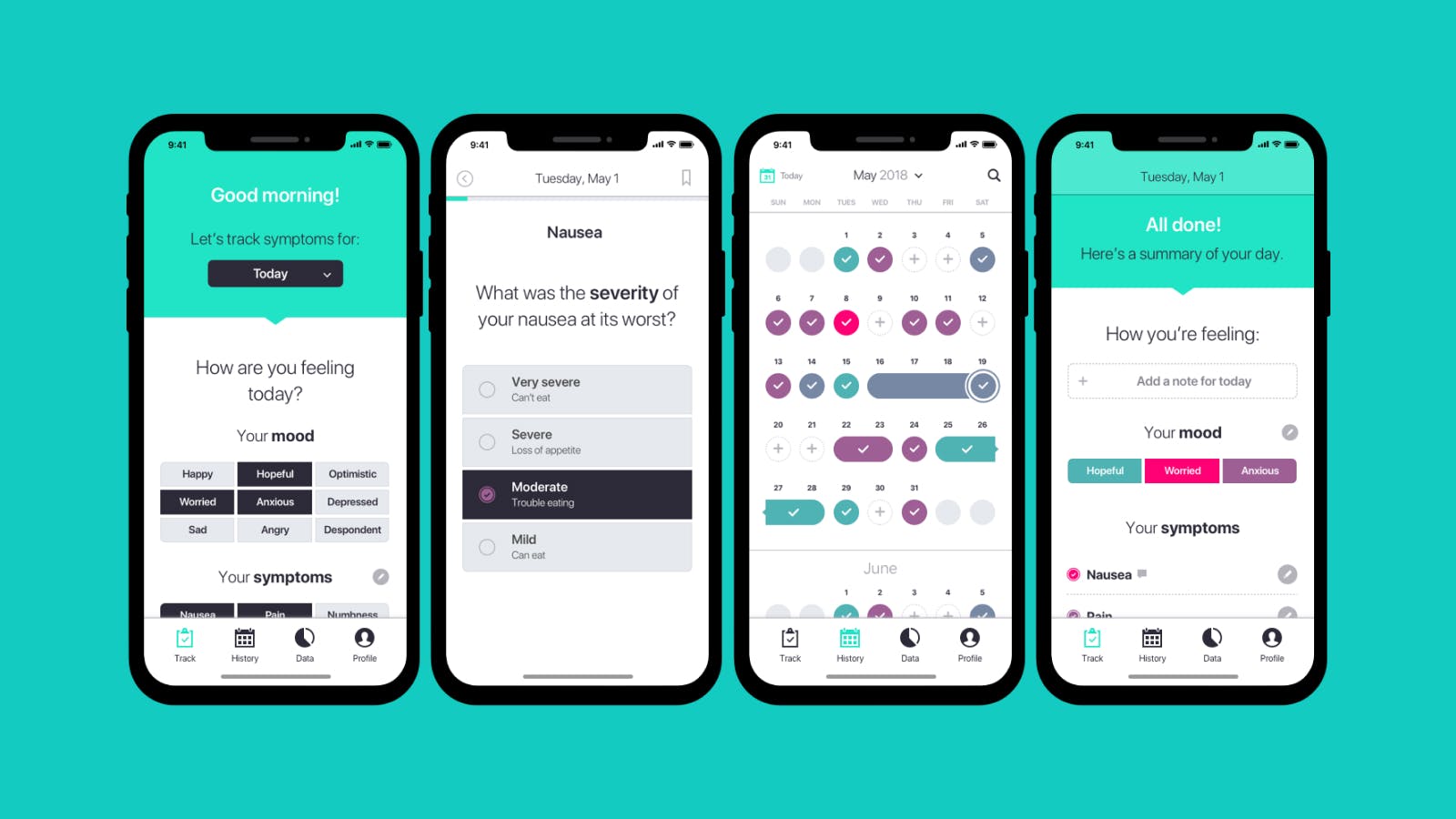
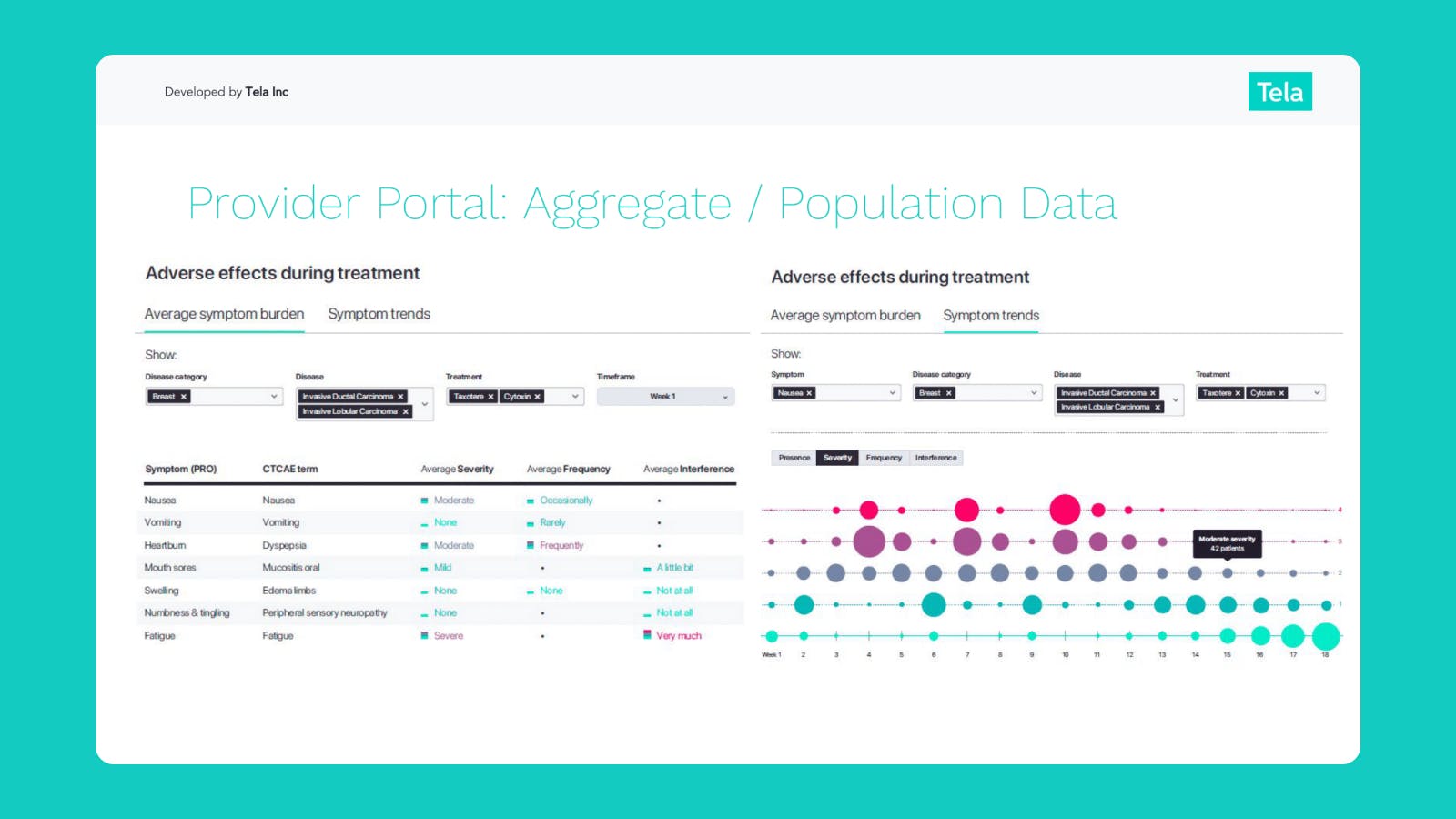

Development & implementing the brand
App and website development
After the prototype, we scaled the benefits of Tela and developed both a free mobile and web application, refining the user experience and visual design. Its many features allow users to:
- Identify and manage high risk patients
- Improve efficiency and quality of symptom management and distress screening
- Inform appointments with at-a-glance snapshots
- Use population data to inform planning and research
Branding
As the app developed and its user base grew, so too did the brand. In 2018 we began a branding process where we developed a concept around metaphors of “fabric” and “thread” (“Tela” means “fabric” in Spanish and Latin) which then informed our design language and component library. We launched a new iteration of the mobile app, with the new branding, alongside our design for the care team-oriented web application.
